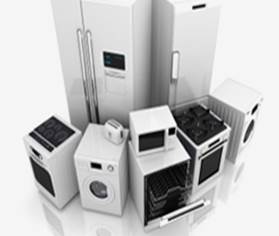
Whiteware

Whiteware can contain some hazardous substances: lead and lead compounds, cadmium, hexavalent chromium, chlorofluorocarbons (pre-1995), hydrochloroflurocarbons, brominated or halogenated flame retardants, oils and greases.
There is the risk that these substances may leach into surrounding aquatic and terrestrial ecosystems, causing both health and environmental problems. Fires at landfill sites can also result in the emission of toxic dioxins and fumes into the atmosphere from flame-retarded plastics. The presence of toxic materials also presents problems for the future remediation of landfill sites.
Whiteware or white goods refers to major appliances that perform a routine household take such as cooking, cleaning or keeping food: fridge, freezer, range, dryer, washing machine, dishwasher.
These can be expensive items to purchase: where practical, choose good quality and energy-efficient white goods that can last you a lifetime.
This article on the Ministry for the Environment website describes environmental issues with whiteware.
Reuse and recycling of whiteware is considered environmentally preferable to sending to landfill, as this:
- results in the loss of valuable materials including ferrous and non-ferrous metals. To extract from landfill, process, assemble and transport these materials involves enormous amounts of resources
- places pressure on landfill space
There are two whiteware product stewardship schemes underway in New Zealand.
Rather than buying new, a good second-hand whiteware item will be cheaper, and better for the environment.
Instead of replacing a broken whiteware item, see if it can be repaired. Check out the Home Appliances - Servicing agents listed in the Yellow Pages.
On-sell your pre-loved whiteware.
Donate working white goods to a good cause.
Whiteware can be recycled at the Whanganui Resource Recovery Centre and the Midtown Transfer Station. (Fees apply.)
Contact Murray's Appliance Repairs (021 0823 6126) at Walker Thomas and ask about options for recycling.
Keep from landfill where possible.